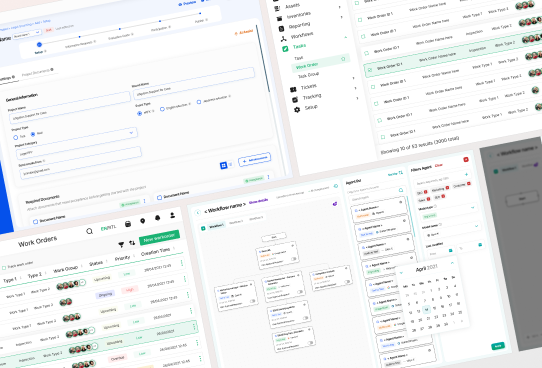Human-Centered Design
<p>Human-centered design is an approach to problem-solving that prioritizes the needs, preferences, and experiences of the end users. It ensures that products, systems, and services are tailored to the people who will use them, making them more effective and user-friendly. This concept is crucial in the digital design for climate tech, where understanding the user can lead to more impactful and sustainable solutions.</p>
<p>Historically, design processes often focused on aesthetics or functionality without necessarily considering the user experience. However, with the rise of digital solutions and increasingly complex user needs, human-centered design has become a cornerstone for creating products that truly resonate with users.</p>
<h2>Key Principles of Human-Centered Design</h2>
<p>At its core, human-centered design involves several key principles:</p>
<ul>
<li><strong>Empathy:</strong> Understanding the user's environment, challenges, and needs through direct interaction.</li>
<li><strong>Collaboration:</strong> Involving diverse perspectives, including those of users, stakeholders, and experts.</li>
<li><strong>Iterative Process:</strong> Continuously improving designs through prototyping, testing, and refining based on feedback.</li>
<li><strong>User Involvement:</strong> Engaging users throughout the design process to ensure their needs are met.</li>
</ul>
<h2>Applications in Climate Tech</h2>
<p>Human-centered design is particularly valuable in climate tech, where solutions must address complex environmental challenges while being accessible and engaging for users. For instance, in the sector of carbon capture technology, designing user-friendly interfaces for monitoring and managing systems can enhance adoption and effectiveness.</p>
<p>Similarly, in sustainable agriculture, tools designed with farmers' needs in mind can lead to better data collection, resource management, and decision-making. By prioritizing user experience, these tools can significantly improve efficiency and outcomes.</p>
<p>Case Study Example: <a href="https://www.nature.org/en-us/what-we-do/our-insights/perspectives/designing-our-future-with-climate-action/" style="color: #2896FF; text-decoration: underline;">Designing Climate Solutions with Human-Centered Approaches</a></p>
<h2>Challenges and Solutions</h2>
<p>Despite its benefits, implementing human-centered design comes with challenges:</p>
<ul>
<li><strong>Resource Intensive:</strong> The process can be time-consuming and require significant investment in research and testing.</li>
<li><strong>Balancing Stakeholder Needs:</strong> Sometimes, the needs of different user groups or stakeholders may conflict.</li>
<li><strong>Adapting to Change:</strong> User needs and market conditions can evolve, requiring continuous adaptation.</li>
</ul>
<p>To address these challenges, it is essential to leverage tools and methodologies that streamline the human-centered design process. Platforms like <a href="https://www.nngroup.com/" style="color: #2896FF; text-decoration: underline;">Nielsen Norman Group</a> offer valuable resources for conducting user research and usability testing. Additionally, employing agile methodologies can help teams iterate quickly and efficiently.</p>
<h2>Practical Steps for Implementation</h2>
<p>Here are some actionable steps to integrate human-centered design into your workflow:</p>
<ul>
<li>Conduct user research through interviews, surveys, and observations to gather insights.</li>
<li>Create personas representing your target users to guide design decisions.</li>
<li>Develop prototypes and conduct usability tests to validate design concepts.</li>
<li>Iterate based on feedback, continuously refining the product to better meet user needs.</li>
</ul>
<h2>Conclusion</h2>
<p>Human-centered design is an essential approach for creating digital products that are not only functional but also resonate with users. By prioritizing empathy, collaboration, and iteration, designers can develop solutions that truly address user needs and drive positive outcomes. For those in the climate tech sector, this approach can lead to more effective and sustainable innovations, ultimately contributing to a better future. To delve deeper into human-centered design techniques, consider exploring resources from the <a href="https://www.interaction-design.org/" style="color: #2896FF; text-decoration: underline;">Interaction Design Foundation</a>.</p> <p>If you’re looking for inspiration to elevate customer and user experience for enterprise-grade products, View our work with the Ministry of Health of Saudi Arabia for curating the UX of an <a href="https://www.whatifdesign.co/work/enterprise-software-for-hospitals" style="color:#2896FF; text-decoration:underline;">Asset Management Tracking Platform</a></p>
<p>Ready to get started? <a href="https://cal.com/akhilak/what-if-design?duration=30" style="color:#2896FF; text-decoration:underline;">Book a 1:1 consultation call</a> with us today.</p>

Let's scale your impact with great design.
Free consultation, no sales pitch
Thank you! Your submission has been received!
Enter you email correctly!
Let’s talk
Nothing great is built alone.
Let’s connect about your vision, our work and how we can collaborate.
Get in touch
© 2025 What if Design
Stripe climate partner

